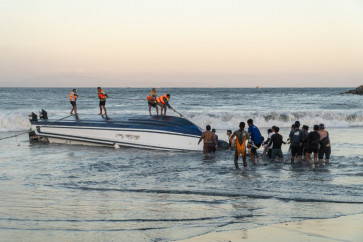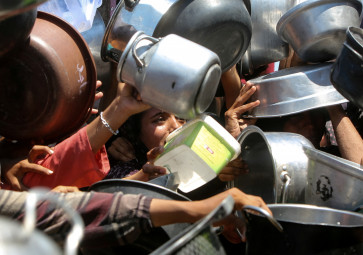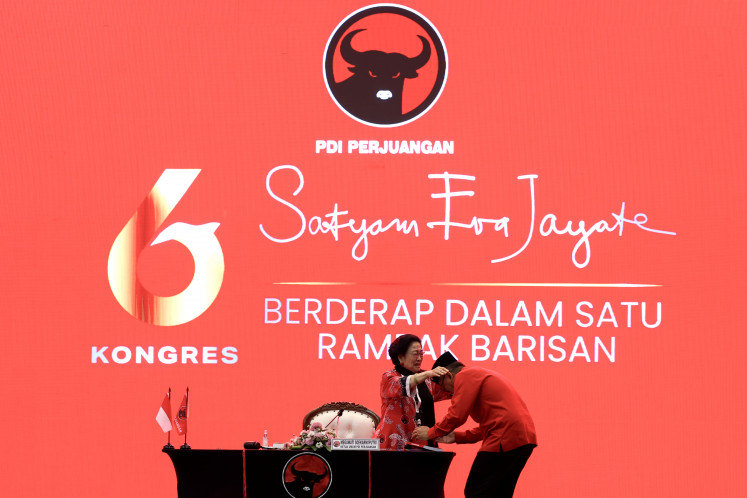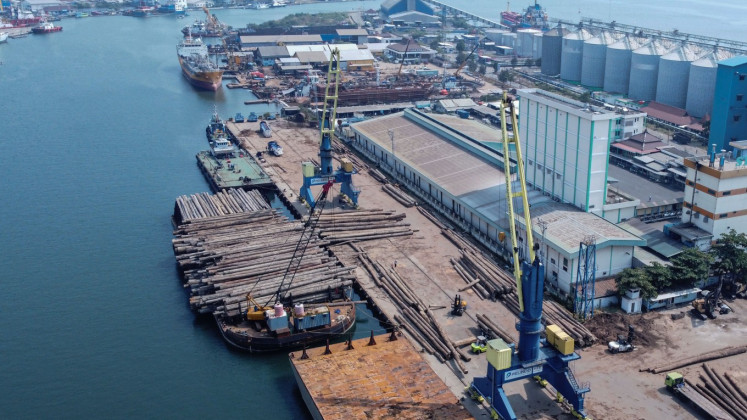Popular Reads
Top Results
Can't find what you're looking for?
View all search resultsPopular Reads
Top Results
Can't find what you're looking for?
View all search resultsFuel-price protesters who cling to their modest lives
Widespread protests broke down political support for the planned April 1 fuel-price hikes last week
Change text size
Gift Premium Articles
to Anyone
W
idespread protests broke down political support for the planned April 1 fuel-price hikes last week. Some say the protesters were hired crowds. But during interviews, several gave an idea of why people joined the rallies, despite efforts to explain that continued fuel subsidies would pose huge problems for funding on areas like infrastructure.
Take garment worker Indah Ratnasari, whose family spends about Rp 50,000 a day on basic expenses.
“My child spends Rp 20,000 daily. That’s not even counting books and other school-related expenses,” Indah said. “I don’t know how we will manage putting our kids through school if prices go up.”
Indah said that she earned the minimum wage, of about Rp 1.29 million (US$141) a month.
“With conditions as they are now, I can barely afford chili. A small bag of that stuff costs Rp 6,500. If fuel prices go up, then other prices will go up. Does it mean that I should eat nothing more than rice and tempeh? Even the rice I can afford now tastes awful,” she said.
Similarly, Heru Santo said that he wanted to prevent the hikes to avoid adding to the suffering of Indonesians. A shoe-factory worker from Tangerang, Heru said his family would have had to tighten their belts even further if the government policy had been passed.
Mulyadi, an automotive worker from Tangerang who also earned the minimum wage, said the fuel hikes could cost him and his family their weekend-leisure activities.
“I usually go with my family to the mall on the weekends. Not to buy anything, because we can’t afford the stuff they sell there. Just to look around,” he said. “No more mall-gazing weekends for us if fuel goes up. After all, we have to pay money to travel to the malls, even if we don’t actually ever buy anything.”
The government had proposed to increase subsidized fuel price from Rp 4,500 per liter to Rp 6,000 per liter. The plan, however, was met by strong opposition from the public. Rallies against the hike were held across the country ahead of the House of Representatives’ plenary session last Friday.
Despite the plan to raise fuel prices, the government still needs to increase fuel subsidies to Rp 137.37 trillion, from Rp 123.59 trillion in the original budget, to cope with the surge in global crude oil prices.
As of February, the Indonesian Crude Price (ICP) was already 22 percent higher than the 2012 state budget prediction of a maximum price of $100 per barrel. The $122 per barrel price in February was a steep rise from the $115.91 recorded the previous month.
However, bowing to public pressure, the House voted for a second option of changing the fuel prices if the ICP differs from budgeted forecasts by an average of at least 15 percent over a six-month period.
The announcement over the decision, however, was marred by clashes between university students observing the plenary session and House security guards.
Bhakty Christiandi, a student at the Industry Management University (STMI) who joined the protest with his university’s student executive board (BEM) chapter, receives about Rp 1 million a month for living expenses from his retired parents.
“I don’t know how my parents will afford my education if prices go up. I also have a younger sibling,” Bhakty said.
Nuzul, a National Union Confederation (Konfederasi Serikat Nasional) organizer, said that she was worried about the way government policies were pitting people against one another.
“I know that it will lead me to be more antagonistic to the public transportation drivers I see every day. Neither of us want fuel prices to go up, but if it happens, then we’ll have to deal with it by trying to cut as many corners around other people as possible,” the clothing-factory worker said.
Some of the protesters, however, would not be so affected by a price hike.
Riska Dwipratiwi, a staff member of the People’s Conscience Party (Hanura), said that she joined the protests because she was concerned about the effects that the hikes would have on the Indonesian people.
However, she said that soaring costs of living would not prevent her spending her monthly leisure expenditures, focused on fashion. “I spend at least Rp 200,000 in clothes each month,” Riska said. (png)










